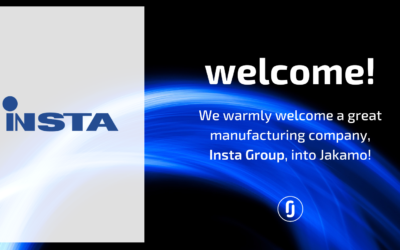Enhancing the performance of supply chain through collaboration


Manufacturing industry is known from its complex supply chains, which are stretching over different geographical locations. In the past, companies used to be hierarchical units, where decision-making was made in silos. In today’s continuously changing business environment, companies need to be agile in order to meet their end-customer requirements, so companies cannot hide in their silos no more. The current state of competition has gone a thoroughchange too. Previously, it used to be companies competing against companies in their respective markets. Nowadays it is supply chains against other supply chains. The companies that are successful today, are equipped with highly collaborative supply chains that are responsive, efficient and effective.
Supply chain collaboration (SCC) has emerged as a practice, which helps organizations to control their supply chain and enhance the total competitiveness of supply chain. Collaboration is a term, that can be understood easily, but if one wants to address its characteristics and meaning inside manufacturing industry, how can it be described?
In short, SCC can be defined as two or more independent companies jointly working to align their supply chain processes to create value to end-customer and stakeholders than acting on their own. The mutuality of benefits, rewards and sharing risks together with the exchange of information are the foundation of the supply chain collaboration-relations. These relationships must have a long-term insight, because supply chain partners must work as a team, exchange information transparently and share their resources to achieve shared goals. When companies are successful in their SCC-activities, they are at the same time enhancing the performance of their supply chain.
Sometimes SCC-relationships fail to succeed. There are several potential reasons for this. Maybe the most common issue is that SCC-activities are mainly pointed out towards supplier organizations. This is understandable, but customer organizations should never forget that the value is created collaboratively by working towards common goal. SCC is not present, when customers are forcing their suppliers to start using some one-way portal, which only benefits the customer. Imagine this from the supplier organizations point of view. Let’s say that as a supplier you have 15 strategic customers and all of them have different ways how to share information to their suppliers. This supplier in question has experience from sharing information to their customers via portals, EDI-connections, extranets and even web-folders. However, most of the strategic information that they receive, is handled via e-mail. The information sharing network from supplier’s perspective becomes very complex and inefficient. This is not lucrative situation for the both of the sides of the SCC-relationship.
Collaborative planning is one very fundamental area of SCC. It helps the organizations to enhance their visibility among their upstream and downstream partners of the supply chain. The most desired situation of collaborative planning exists when partners have created joint business plans, which, in order to be lucrative, require sharing quality information to each other in a way that the capability of supplier is improved to match the changing requirements of the customer. When collaborative planning is executed properly in a supply chain, it helps the suppliers to perform more efficiently. To succeed in collaborative planning activities, customers have to be open to share their forecasts and other strategic information to their suppliers, so they can together create value for the end-customer of the supply chain.
With the help of received quality information and collaborative planning activities, suppliers are able to control their production capacities and steer their production towards the requirements of their customers. Since the performance of the supply chain improves with the help of these activities and the total supply chain surplus increases, it should be clear that the rewards gained by the successful collaboration should be shared equally among the supply chain partners. However, this is often not true. Most of the supplier organizations feel that their customers should be more open to share the risks and rewards with their suppliers. In some cases, customer organizations are pushing the total risks towards their suppliers and are not rewarding them for taking the risks. This is not favourable environment at all. When suppliers perform in a way that enhances the performance of the customer and the total supply chain, they should be rewarded accordingly.
In this text so far, there has been a lot of mentions about the supply chain performance. Many of supplier organizations are aware about the supply chain performance metrics that are used by their customers. These metrics are used to evaluate the performance of suppliers. In manufacturing industry, most common metrics are e.g. the OTD (On time delivery), COPQ (cost of poor quality) and the average purchasing prize. The metrics should be visible to the both sides concurrently. For example, OTD is a metric that does not often appear similar towards the SCC partners, since the customer and the supplier are measuring it in different ways. This could be tackled if simple standards and calculations of performance measurement metrics is agreed among the both sides collaboratively.
Since information sharing (and especially the quality of the information) plays a huge role in the success of SCC, these issues can be tackled with agreeing the usage of most capable tools for supply chain collaboration. Modern supply chain collaboration platform like Jakamo has a versatile scope, which allows the both sides to perform several vital business activities related to procurement, development and quality-issues under the same platform. Having the most up to date-tools to perform these activities with supply chain partners allows the both sides to develop their relationship towards strategic level of partnerships, where shared information is transparent, top-quality and friction-free to the both of the organizations. In these strategic level partnerships, the risks and rewards are divided equally by the both sides and performance metrics are visible and in alignment among the both sides.
Jakamo’s many-to-many platform is a supply chain solution for companies operating in manufacturing ecosystem. It’s designed for companies which want to be agile and aims to continue to perform better than other competitive supply chains even during the rough phases of competition. These kind of digital supply chains are synchronously connected, informed, smart and automated, so the white-collar people can focus on creating the value to the end-customer of the supply chain, instead of non-value-adding activities. With the help of digital supply chain solutions like Jakamo, the collaboration of a supply chain can jump into new dimensions.
Lassi Puhtila
Business Development Engineer at Jakamo
E-book: Supplier Experience
Supplier Experience – The Fundamentals of Modern Supplier Collaboration is a carefully crafted guide that presents the concept of Supplier Experience through six practical lenses. Download your free copy!
Recent Posts
- Jakamo Business Central ERP Connector Now Available in Microsoft Marketplace
- Insta Group strengthens supplier collaboration and sustainability efforts with Jakamo
- TECHSAVVY MEDIA: Supply chain expert – Relationships with your suppliers are key to greener manufacturing
- Fastems Advances Supply Chain Sustainability with Jakamo
- Jakamo achieves ISO 27001 certification






